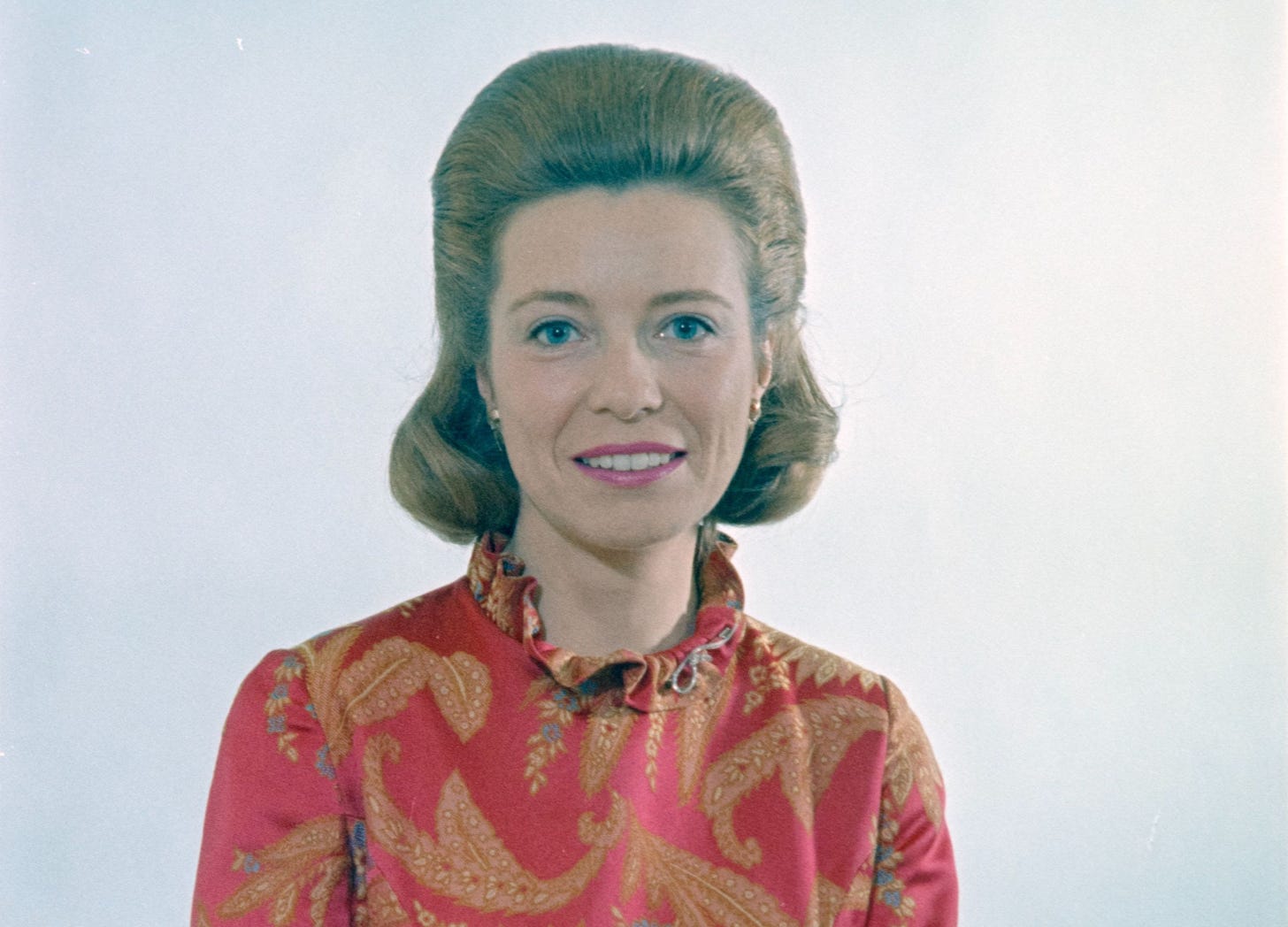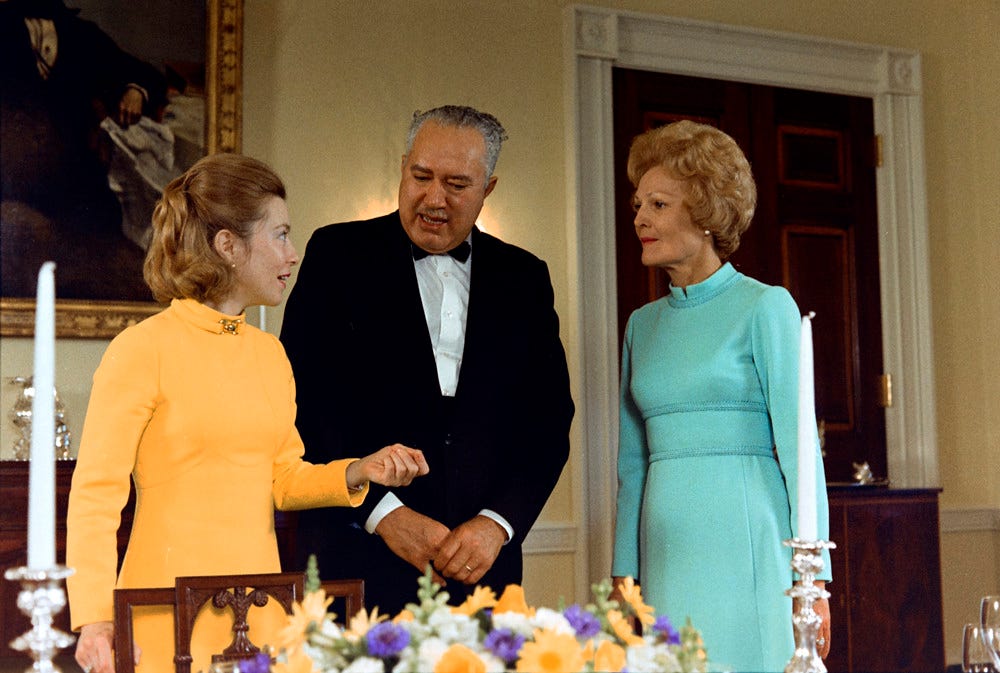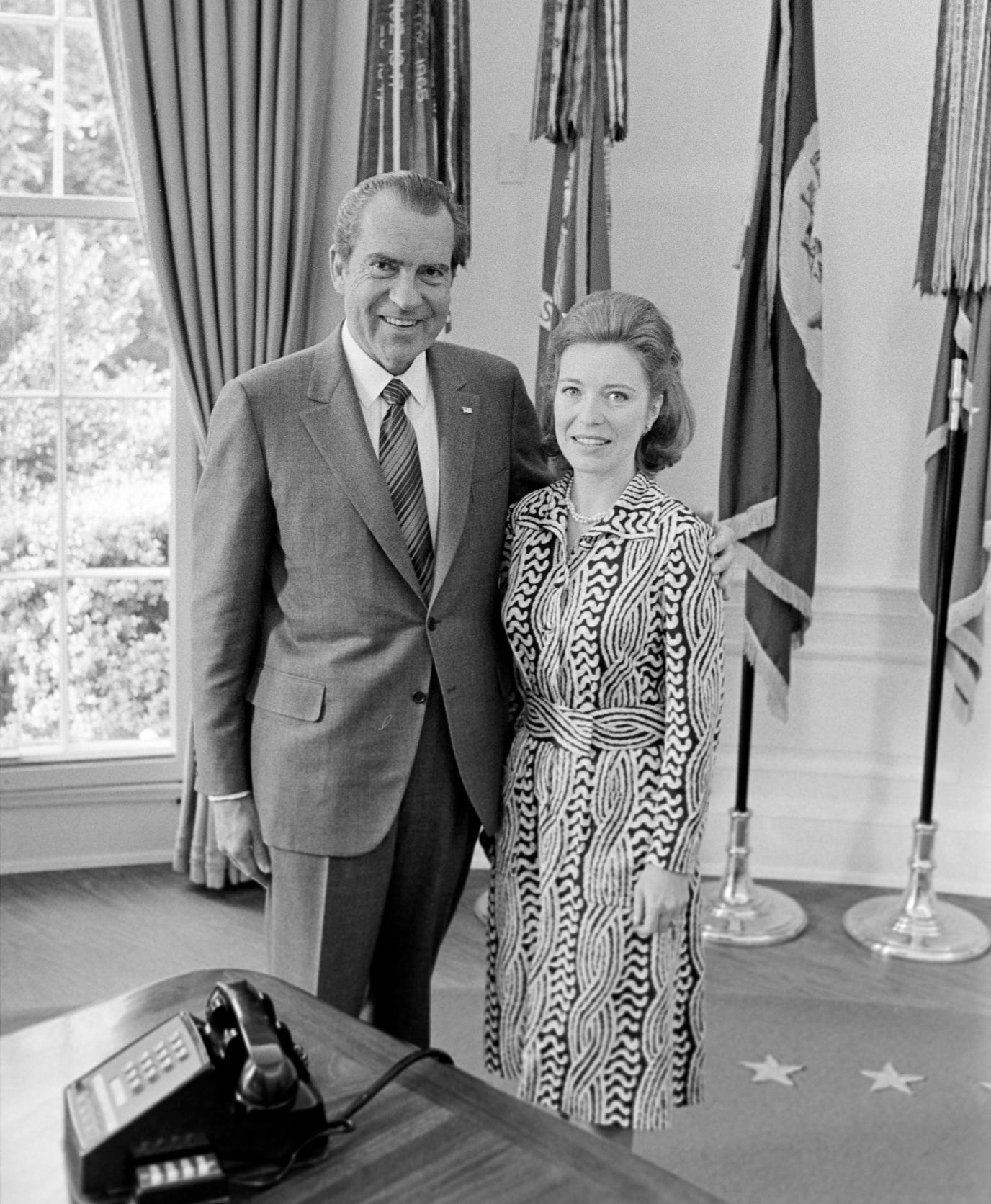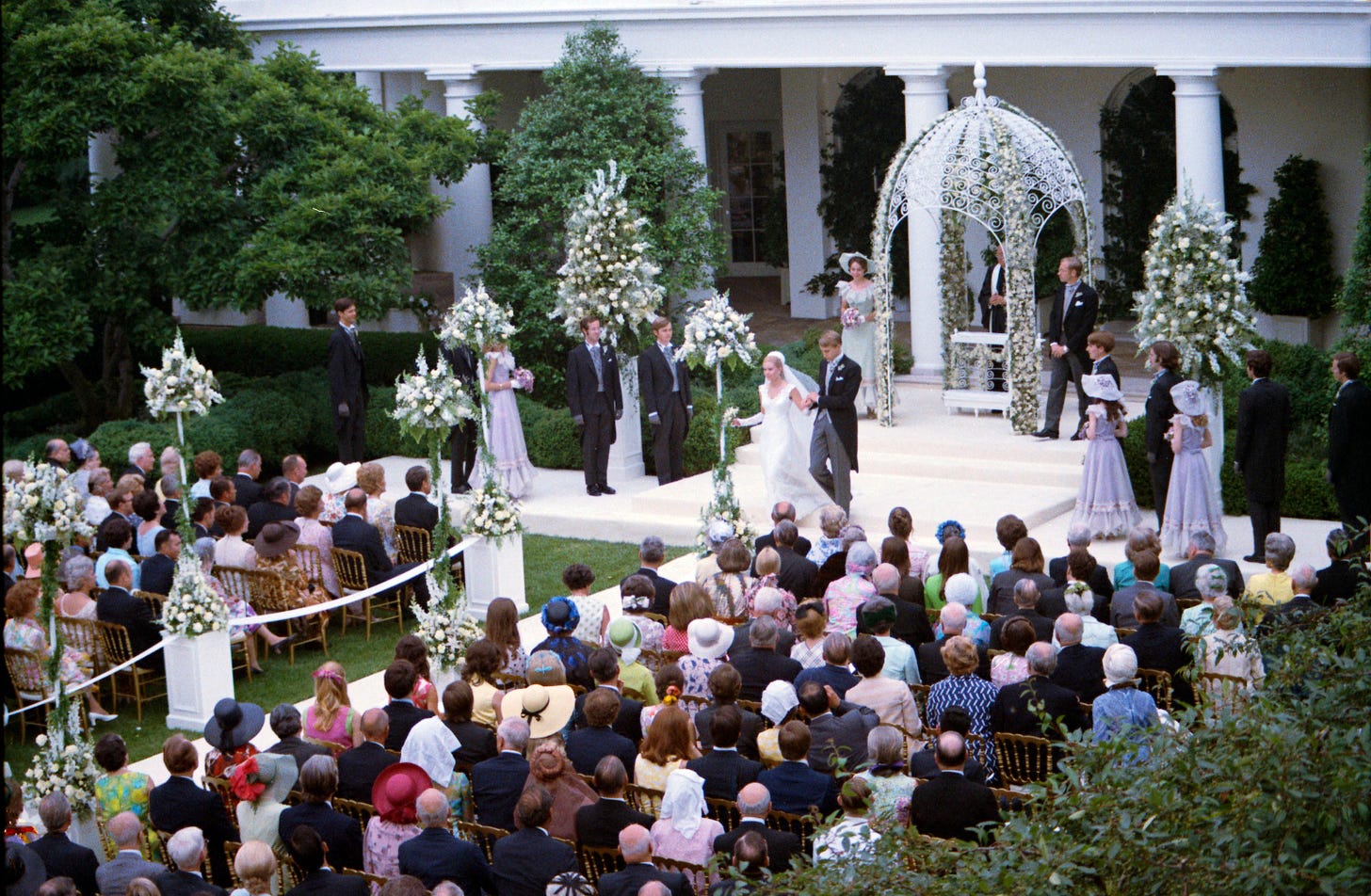Remembering the Gracious Elegance of Lucy Winchester Breathitt
The 14th White House social secretary helped set the protocol during the Nixon administration.

In the remaining hours of the Richard Nixon presidency on Aug. 8, 1974, White House Social Secretary Lucy Winchester sat on the floor in a room of the White House where she and members of her staff answered incoming phone calls from the American public. Each phone call would be followed up with a card from the Nixon family. This was a gesture that then First Lady Pat Nixon believed would mean a lot to the citizens who reached out during this troubled time. And, it was executed flawlessly by Winchester and her staff.
“The phones rang all day, people begging the President not to resign. As soon as people called, we were mailing out these cards. Everyone was taking calls, and hand-addressing these cards—marvelous ‘team spirit’ with a lot of tears,” writes Pat Howard, assistant to the social secretary, in her notes of that day that were later published in the biography The Mysterious Mrs. Nixon: The Life and Times of Washington’s Most Private First Lady by Heath Hardage Lee.
Howard remembers vividly the frenetic pace in those final hours, now some 50 years ago, and how a determined Lucy Winchester—who would later become Lucy Winchester Breathitt after marrying former Governor of Kentucky Edward T. Breathitt, Jr. in her post White House years—worked up until the last second of the Nixon administration.
“People are calling and crying and not wanting this,” Howard tells East Wing Magazine in a phone interview Thursday. “It was a solemn time, and yet, it was a time that everyone worked together. We always worked together.”
That was the way Lucy Winchester Breathitt, the 14th White House social secretary, ran the team tasked with its social events. She died on September 4 at the age of 88.

Breathitt served as White House Social Secretary from 1969 to 1974, the entirety of the Nixon administration. A Lexington, Kentucky socialite, she worked closely with then First Lady Pat Nixon, managing the planning and execution of 76 state dinners and countless other parties, receptions and special events, according to the Richard Nixon Foundation. The Washington Post wrote of her in 1970 that “she grew up in an atmosphere of gracious elegance, which some of her friends here say is why she is totally unawed by her position at the White House.”
Before arriving at the White House, Breathitt had worked in New York for the advertising firm Leo Burnett and at the United Nations in the protocol department, Lee writes in her Pat Nixon biography. Breathitt returned to Kentucky after the divorce from her first husband and death of her father, to manage the family farm from the bottom up. She eventually made it prosperous. After meeting with and impressing Richard Nixon himself, according to Lee, Winchester was offered the job as the first lady’s social secretary three separate times after the election. She turned down the job twice because as a 32-year-old, divorced mother, she was taking care of her young daughter on her own while running her family’s multiple farms. When asked a third time, however, she accepted deciding it was her patriotic duty.

“Lucy was whip-smart and socially astute. She knew her way around both a foxhunt and a ballroom and was family friends with the ultimate Washington bad girl (and Nixon confidante) Alice Roosevelt Longworth,” writes Lee in her biography of Mrs. Nixon. “Lucy also had a wicked sense of humor... and was able to bring out (First Lady) Pat’s sense of fun and silliness.”
Howard, now 81 and living in Knoxville, Tennessee, attests to this aspect of Breathitt’s personality. Breathitt was known for training the first women to serve as White House social aides, volunteer military officers who assist at various White House events. Howard recalls how her boss once played a prank on a new social aide working in the White House during a daytime function.
Howard notes that it was important to Mrs. Nixon that the social aides be relaxed and approachable. At this particular event, the social aide was standing at the entrance to the State Dining Room not quite at attention. Wearing white gloves, his hands were folded and held behind his back.
“Lucy got one of the strawberry tarts and went over to him and opened his hands a little bit, and she put the tart inside the glove,” Howard recalls. “I mean it was just so unbelievable and so funny and so typical Lucy.”
Among the highlights of Breathitt’s service in the White House were events including the Aug. 13, 1969 dinner held in Los Angeles for more than 1,400 guests honoring the Apollo 11 astronauts; the June 12, 1971 White House Rose Garden wedding of Tricia Nixon and Edward F. Cox; and the May 24, 1973 dinner saluting the returned Vietnam prisoners of war—which is still the largest dinner ever held at the White House, according to the Richard Nixon Foundation.

“That Rose Garden wedding was a beautiful event, and Lucy worked night and day on that,” Howard says. “She was a trooper, working so hard.”
As she speaks, more memories bubble up of that historic wedding day. Howard recalls how both she and her boss ran around that day in tennis shoes—very unusual—when President Nixon approached them. Howard instinctively slipped out of the conversation, letting Breathitt have his full attention.
“That was just another time that Lucy was feeling totally responsible for every little aspect of it,” Howard says. Turns out that the president was just wondering what would unfold next at his daughter’s wedding.
Howard asked her boss at the time, “‘Oh, is he worried about any particular thing?’ And she said, ‘No, he just asked me a bunch of questions like a nervous Daddy would.’”
Howard also recalls Breathitt’s artistic side when she hand-designed chandeliers to hang from the inside of the event tents and her diplomatic side when it came to seating for State Dinners.
“No one probably has ever done as good a job of seating state dinners,” Howard says, noting that was because of Breathitt’s background and that she knew people. “In fact, she did the very final review on any state dinner the seating chart because she knew if people weren’t all that fond of each other.”
After leaving the White House, Breathitt served as an assistant chief of protocol at the State Department before returning to her family farm in Kentucky.
In the years Lee researched the book on Mrs. Nixon, she spent several weekends in Lexington, Kentucky with Breathitt, a skilled horsewoman who loved her family, her dog, her horses and farm. Lee describes her as a fantastic hostess, charming, funny and relaxed with a wonderful sense of humor.
“She had an amazing long-term memory and could remember many amazing details and stories about her life as the White House Social Secretary that added so much to the book,” Lee says, adding her commentary on the East vs. West Wing relations was especially insightful. While she was always diplomatic, Lee adds, she also didn’t excuse the sexist behavior of some in the West Wing towards Mrs. Nixon and other East Wingers.
“She did not put up with that,” Lee says, “and in her sweet and Southern way, pushed back and always stood up for Mrs. Nixon, her staff and herself in that order.”


